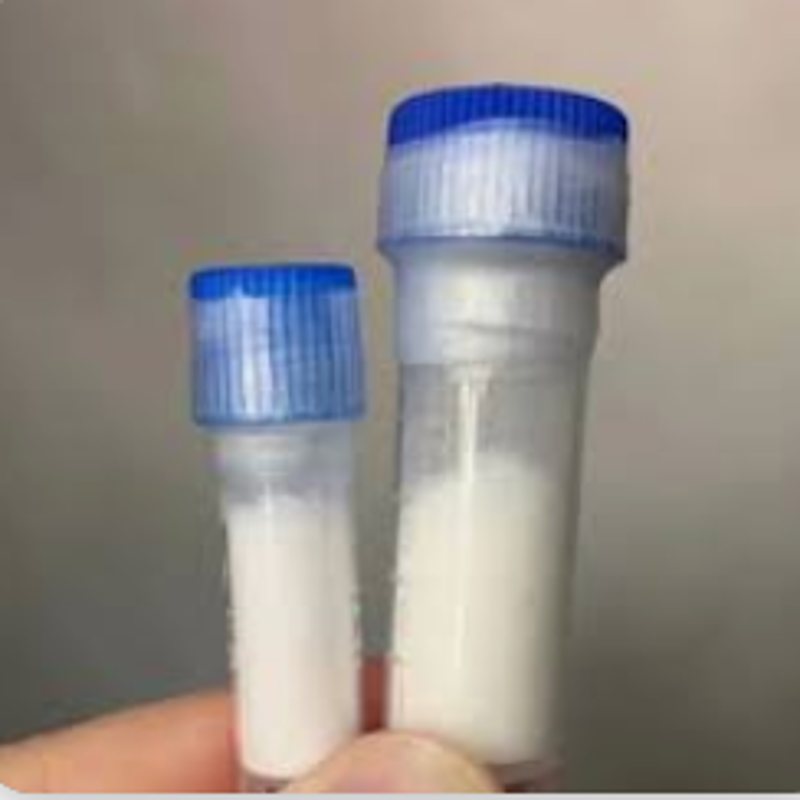-
Categories
-
Pharmaceutical Intermediates
-
Active Pharmaceutical Ingredients
-
Food Additives
- Industrial Coatings
- Agrochemicals
- Dyes and Pigments
- Surfactant
- Flavors and Fragrances
- Chemical Reagents
- Catalyst and Auxiliary
- Natural Products
- Inorganic Chemistry
-
Organic Chemistry
-
Biochemical Engineering
- Analytical Chemistry
-
Cosmetic Ingredient
- Water Treatment Chemical
-
Pharmaceutical Intermediates
Promotion
ECHEMI Mall
Wholesale
Weekly Price
Exhibition
News
-
Trade Service
September 30, 2020 / --- September 2020 is coming to an end, what are the highlights of the September Cell journal research worth learning? The editor-in-chief has organized this and shared it with you.
1.Cell: New SARS-CoV-2 virus variant adapted to mice induces acute lung injury and death in mice doi:10.1016/j.cell.2020. 09.050 In a new study, Baric's team screened a new variant of the SARS-CoV-2 virus, known as SARS-CoV-2 MA10, in mice through a series of in vivo evolutions.
variant of the virus can reproduce multiple aspects of severe COVID-19 disease in standard laboratory mice, such as SARS-CoV-2 MA10 showing increased dose and age-related pathogenicity in BALB/c mice.
results were published online September 23, 2020 in the journal Cell under the title "A Mouse-adapted SARS-CoV-2 Induces Acute Lung Injury (ALI) and mortality in Standard Laboratory Mice."
photo from Pixabay/CC0 Public Domain.
This SARS-CoV-2 model shows morbidity and mortality from COVID-19 diseases, as well as host genetic characteristics, age, cellular phosphory, elevated Th1 cytokines, expression of surfactant and loss of lung function, which is associated with acute lung injury (acute lung injury, ALI) and acute respiratory distress syndrome (acute respiratory syndrome, ARDS) pathological characteristics.
this SARS-CoV-2 model can quickly use existing mouse resources to clarify the role of host genetic characteristics, the basic molecular mechanisms that regulate the onset of SARS-CoV-2, and the protective or pathogenic immune response associated with the severity of the disease.
the model promises to provide a powerful platform for research into ALI and ARDS to use standard laboratory mice to assess the performance of vaccines and antiviral drugs in populations including the most vulnerable populations, i.e. the elderly.
2.Cell: Great progress! In a new study, researchers from Spain's National Centre for Cardiovascular Research (CNIC) found a cell cleansing system that is key to keeping the heart healthy.
this mechanism allows the heart's constrictive cells (myocardial cells) to release damaged parts outside the cells, forming particles called exophers.
these particles are then ingested by a network of macrophages that live inside the heart, which are responsible for removing them before they cause inflammation of the heart.
results were published online September 15, 2020 in the journal Cell under the title "A Network of Macrophages Supports Mitochondrial Homeostasis in the Heart."
papers were co-authored by CNIC researchers Dr. Andrés Hidalgo and Dr. Jose Antonio Enríquez.
the study, which took together more than five years of research.
new insights it provides suggest that, in some cases, cardiac dysfunction may come from defects in resident immune cells, not heart muscle cells.
findings are important for the diagnosis and treatment of heart disease.
, the assumption is that most cells can dispose of or recycle their waste on their own.
In the new study, however, the CNIC team found that in the heart, the process requires close collaboration between two types of cells, so that the substance is transferred from myocardial cells to neighboring macrophages, which are ultimately responsible for disposing of waste.
3.Cell: Challenge the routine! The new study reveals that the synth unit of the bacterial whiplash rotary motor is in fact a small rotating motor doi:10.1016/j.cell.2020.08.016 In a new study, researchers from the University of Copenhagen in Denmark now have a deeper understanding of the dynamics of the bacteria's motion, solving a year-long mystery in the field.
results were published online September 14, 2020 in the Journal of Cell under the title "Structure and Function of Stator Units of The Society Flagellar Motor." "A lot of bacteria can move, or migrate, because they have long lines called whiplash, which they can use to push themselves forward," said Dr. Nicholas Taylor, co-author of the
paper and associate professor at the Noor and Nord Foundation Protein Research Center at the School of Health and Medical Sciences at the University of Copenhagen.
they are achieved by rotating these whiplashes.
rotation comes from the rotary motor of bacterial whiplash, which in turn comes from a protein complex called a stator unit.
this is well known in our field.
we're showing today how this synth unit powers a rotating motor, which is still a mystery so far.
" surprisingly, Taylor and his team found that the synth unit itself was actually a tiny rotating motor.
tiny rotating motor to power the large rotating motor, causing the whiplash to rotate, allowing the bacteria to move.
these findings contradict existing theories about the mechanism of action of the synth unit, and this new knowledge may play a role in the fight against bacterial diseases.
4.Cell: 3D structure doi:10.1016/j.j. Cell.2020.08.024 Hallucinogens such as lSD, psilocybin and mescaline can cause severe and often persistent hallucinations, but they show great potential in treating serious mental illnesses such as severe depression.
to fully study this potential, scientists need to know how these drugs interact with brain cells at the molecular level to cause their dramatic biological effects.
a new study, Dr. Bryan L. Roth of the University of North Carolina at Chapel Hill and Dr. Georgios Skiniotis of Stanford University and their colleagues took a big step in that direction.
they first analyzed the high-resolution structure of these hallucinogens when combined with 5-HT2A serotonin receptors (5-HT2A serotonin receptors, HTR2A) on the surface of brain cells.
study was published in the September 17, 2020 issue of cell, under the title "Structure of a Hallucinogen-Activated Gq-Coupled 5-HT2A Serotonin Receptor."
from Cell, 2020, doi:10.1016/j.cell.2020.08.024.
findings have led to the exploration of more precise compounds that can eliminate hallucinations, but still have strong therapeutic effects.
In addition, scientists can effectively alter the chemical composition of drugs such as LSD and naked-cap mushrooms, hallucinogenic compounds found in mushrooms, which have been given a breakthrough by the U.S. Food and Drug Administration (FDA) to treat depression.
5.Cell: In the course of tumor occurrence, oxidation metabolism promotes the permanent biobiotic doi:10.1016/j.cell.2020.07.039 A key step in tumor occurrence is to determine the mechanism that drives the start of tumor cells, which triggers their fate to produce tumors.
so far, their research has been mainly at the level of gene regulation, through the study of tumor suppressor genes MYC, p53 or KRAS.
metabolic changes in tumor cells are a well-known feature, but it remains unclear whether these changes are the result of permanent biogenicity of tumor cells, so this is the focus of a recent study by the Juergen A. Knoblich team at the Institute of Molecular Biotechnology (IMBA) of the Austrian Academy of Sciences.
In a new study, the Knoblich team chose the black belly fruit fly as a tumor model--- a build-up but somewhat unorthnoid model creature with a long history in cancer research, and the discovery of tumor suppressor gene mutations dates back to the 1970s.
knowledge gained from this simple model organism can be used as a powerful tool to further study human genes.
In fruit flies, they visualized the exact point at which tumor starting cells became permanent bio-chemical cells and genetically manipulated the process--- due to the high complexity of mammalian tumors, this is not easy to accomplish in mammalian tumors.
study was published in the September 17, 2020 issue of cell, under the title "Oxidative Metabolism Drives Immortalization of Neural Stem Cells In Tumorigenesis."
We used a model of fruit fly neural stem cell (NSC) tumor, which was induced by removing the well-known tumor suppressor gene Brat," Knoblich explained.
using this model, we looked at whether metabolism plays an active role in the permanent bioaturation of Brat tumor cells.
, our findings in fruit flies will serve as the basis for subsequent human cell research and lay the foundation for the study of the workings of human cancer.
"6.Cell: Discover the biomarkers that predict which patients are most likely to die from Staphylococcus aphdo, doi:10.1016/j.cell.2020.07.040 Now, since the first patient's blood samples were received for research, In just two years, Gonzalez and his colleagues identified a range of protein and metabolite characteristics associated with death from Staphylococcus aureus bacteremia, a bacterial infection in the blood that kills 20 to 30 percent of infected patients.
in the lab, scientists say these molecular indicators, or biomarkers, can be particularly accurate in predicting which patients are at the highest risk of dying from infection.
study, published recently in the Journal of Cell, is titled "Mortality Risk Profiling of Staphylococcus aureus Bacteremia by Multi-omic Serum Analysis Reveals Early Predictive and Pathogenic Signatures."
study, Gonzalez and his team described one of the most comprehensive molecular assessments to date of serum in human infected patients.
they also validated their findings in mouse models of Staphylococcus aphrobacteria.
s discovery is a leap forward in the development of an immediate predictive tool for the risk of bacterialemia," said Gonzalez, a researcher at the U.S. Department of Health.
it opens up many new fundamental biological questions about how our immune system responds to infection.
"7.Cell: The world's first real-time revelation of the battle between the alfalbusy macrophages and bacteria <!--ewebeditor:page title"-> DOI:10.1016/j.cell.2020.08.020 In a new study, researchers from the University of Calgary in Canada have found how to capture "live" images of immune cells in the lungs.
the first time in the world that they have found a way to record in real time how the immune system fights bacteria that affect the lungs of mice.
the findings provide new insights into how cleaners of the immune --- the so-called --- macrophages.
, which was once thought to be stationary, have observed them working, moving through the space, between and around the vesicles in search of bacteria and viruses.
study was recently published in the journal Cell under the title "Patrolling Alveolar Macrophages Conceal Bacteria from Immune System to Maintain Homeostasis."
from Cell, 2020, doi:10.1016/j.cell.20.







